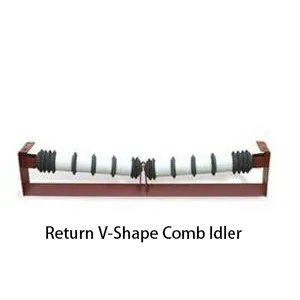 Afrikaans
Afrikaans  Albanian
Albanian  Amharic
Amharic  Arabic
Arabic  Armenian
Armenian  Azerbaijani
Azerbaijani  Basque
Basque  Belarusian
Belarusian  Bengali
Bengali  Bosnian
Bosnian  Bulgarian
Bulgarian  Catalan
Catalan  Cebuano
Cebuano  Corsican
Corsican  Croatian
Croatian  Czech
Czech  Danish
Danish  Dutch
Dutch  English
English  Esperanto
Esperanto  Estonian
Estonian  Finnish
Finnish  French
French  Frisian
Frisian  Galician
Galician  Georgian
Georgian  German
German  Greek
Greek  Gujarati
Gujarati  Haitian Creole
Haitian Creole  hausa
hausa  hawaiian
hawaiian  Hebrew
Hebrew  Hindi
Hindi  Miao
Miao  Hungarian
Hungarian  Icelandic
Icelandic  igbo
igbo  Indonesian
Indonesian  irish
irish  Italian
Italian  Japanese
Japanese  Javanese
Javanese  Kannada
Kannada  kazakh
kazakh  Khmer
Khmer  Rwandese
Rwandese  Korean
Korean  Kurdish
Kurdish  Kyrgyz
Kyrgyz  Lao
Lao  Latin
Latin  Latvian
Latvian  Lithuanian
Lithuanian  Luxembourgish
Luxembourgish  Macedonian
Macedonian  Malgashi
Malgashi  Malay
Malay  Malayalam
Malayalam  Maltese
Maltese  Maori
Maori  Marathi
Marathi  Mongolian
Mongolian  Myanmar
Myanmar  Nepali
Nepali  Norwegian
Norwegian  Norwegian
Norwegian  Occitan
Occitan  Pashto
Pashto  Persian
Persian  Polish
Polish  Portuguese
Portuguese  Punjabi
Punjabi  Romanian
Romanian  Russian
Russian  Samoan
Samoan  Scottish Gaelic
Scottish Gaelic  Serbian
Serbian  Sesotho
Sesotho  Shona
Shona  Sindhi
Sindhi  Sinhala
Sinhala  Slovak
Slovak  Slovenian
Slovenian  Somali
Somali  Spanish
Spanish  Sundanese
Sundanese  Swahili
Swahili  Swedish
Swedish  Tagalog
Tagalog  Tajik
Tajik  Tamil
Tamil  Tatar
Tatar  Telugu
Telugu  Thai
Thai  Turkish
Turkish  Turkmen
Turkmen  Ukrainian
Ukrainian  Urdu
Urdu  Uighur
Uighur  Uzbek
Uzbek  Vietnamese
Vietnamese  Welsh
Welsh  Bantu
Bantu  Yiddish
Yiddish  Yoruba
Yoruba  Zulu
Zulu belt conveyor idler types
Understanding Belt Conveyor Idler Types
Belt conveyors play a critical role in the transportation of bulk materials across various industries. One of the essential components of a belt conveyor system is the idler. Idlers support the conveyor belt and help in maintaining its tension, thereby enhancing the overall efficiency of the system. There are several types of belt conveyor idlers, each designed to suit specific applications and operational conditions. This article delves into the various types of belt conveyor idlers, their functions, and when to use them.
1. Flat Idlers
Flat idlers are the most commonly used type of idlers and are designed to support the belt in a flat position. These idlers consist of a set of rollers that are arranged horizontally, allowing the belt to run smoothly over them. Flat idlers are ideal for horizontal conveying applications and are typically found in facilities like manufacturing plants and warehouses where the materials need minimal elevation changes. However, their use in inclined systems can lead to belt misalignment and increase wear and tear.
2. Trough Idlers
Trough idlers, in contrast to flat idlers, are designed with a slight angle or trough shape. This design enables them to better support the load-carrying belt and to contain the materials being transported, reducing spillage and material loss. Trough idlers are suitable for steep inclines and are commonly used in mining and construction industries where the delivery of bulk materials is needed. The standard angles for trough idlers are typically 20°, 35°, or even 45°, depending on the specific requirements of the application.
Return idlers are employed on the return side of the conveyor where the belt returns to its starting position after unloading the material. These idlers help guide the belt back to the conveyor head, maintaining its alignment and preventing sagging. They are usually flat and designed to bear the tension of the loaded belt. Return idlers can significantly affect the overall efficiency of the conveyor system by ensuring that the belt runs smoothly without friction or unnecessary wear.
belt conveyor idler types

4. Impact Idlers
When bulk materials are loaded onto the conveyor belt, they can exert significant impact forces, leading to belt damage and increased maintenance costs. Impact idlers are designed to absorb this shock and provide a cushioning effect. Typically placed at loading points, these idlers are often equipped with rubber or other resilient material to help minimize the impact on the belt. Utilizing impact idlers is crucial for industries handling heavy and abrasive materials, as they prolong the lifespan of the conveyor belt.
5. Self-Aligning Idlers
Self-aligning idlers are specifically engineered to prevent misalignment of the conveyor belt, which can be a common issue in long belt conveyors. These idlers feature a pivoting roller design that automatically adjusts to the belt’s path, ensuring that it remains centered. This is particularly beneficial in applications where the belt might encounter lateral forces or changes in material load distribution. Implementing self-aligning idlers reduces the risk of belt escape and can drastically lower maintenance costs.
6. Adjustable Idlers
Adjustable idlers allow for tension adjustments on the conveyor belt as it wears over time or when the load conditions change. These idlers can be adapted to accommodate different belt widths and can cater to a variety of material handling needs. Maintaining ideal belt tension is crucial for optimizing conveyor performance, thus adjustable idlers are essential in dynamic environments where loads and operational conditions vary frequently.
Conclusion
Selecting the right type of belt conveyor idler is vital for ensuring the efficiency and longevity of a conveyor system. By understanding the various types of idlers—flat, trough, return, impact, self-aligning, and adjustable—operators can tailor their conveyor solutions to meet the specific demands of their operations. Investing in the appropriate idlers not only enhances material handling efficiency but also decreases maintenance costs and extends the operational life of conveyor systems. As industries continue to evolve, so too will the technology surrounding belt conveyor idlers, making it essential for professionals to stay informed about the best practices and innovations in this area.
-
Revolutionizing Conveyor Reliability with Advanced Rubber Lagging PulleysNewsJul.22,2025
-
Powering Precision and Durability with Expert Manufacturers of Conveyor ComponentsNewsJul.22,2025
-
Optimizing Conveyor Systems with Advanced Conveyor AccessoriesNewsJul.22,2025
-
Maximize Conveyor Efficiency with Quality Conveyor Idler PulleysNewsJul.22,2025
-
Future-Proof Your Conveyor System with High-Performance Polyurethane RollerNewsJul.22,2025
-
Driving Efficiency Forward with Quality Idlers and RollersNewsJul.22,2025





























